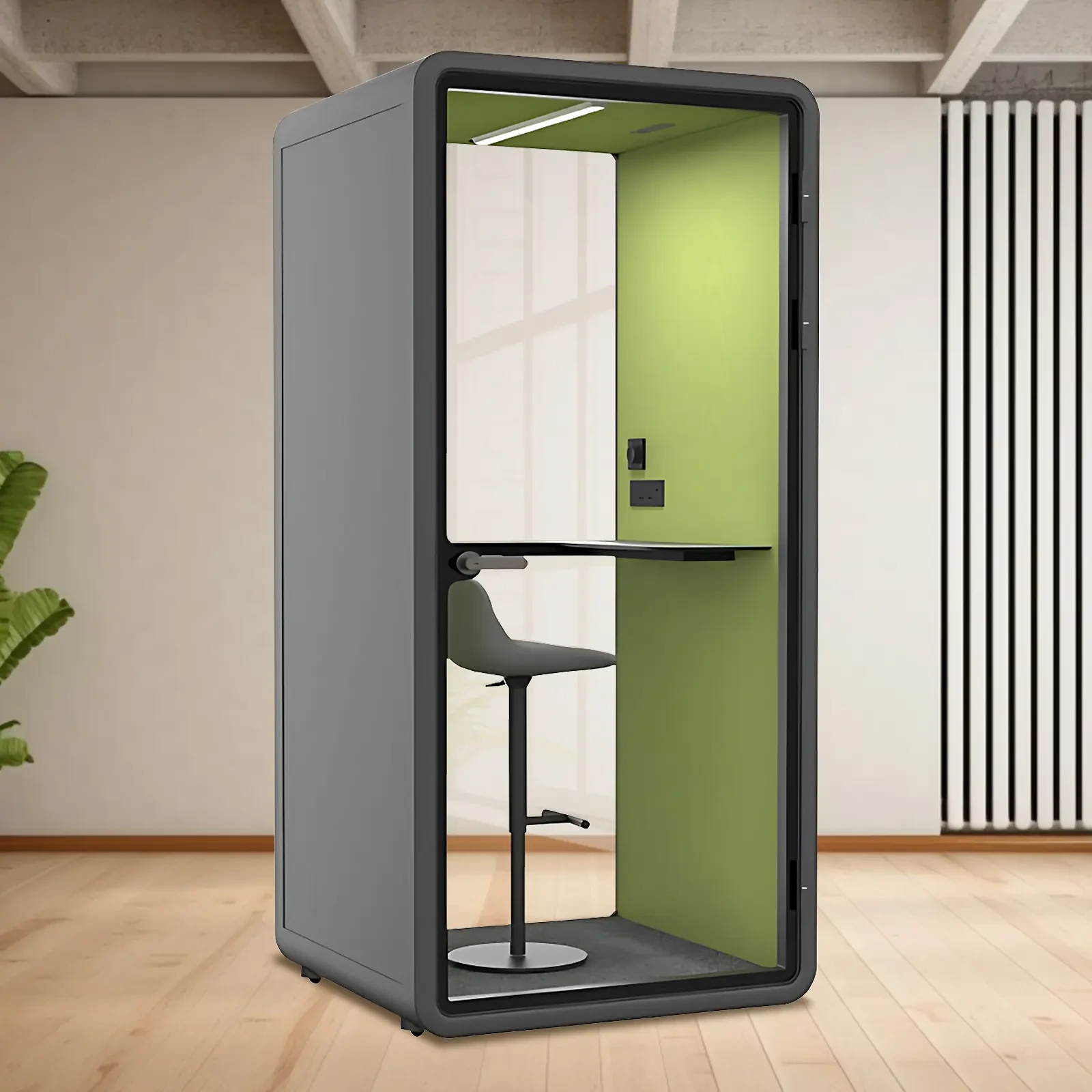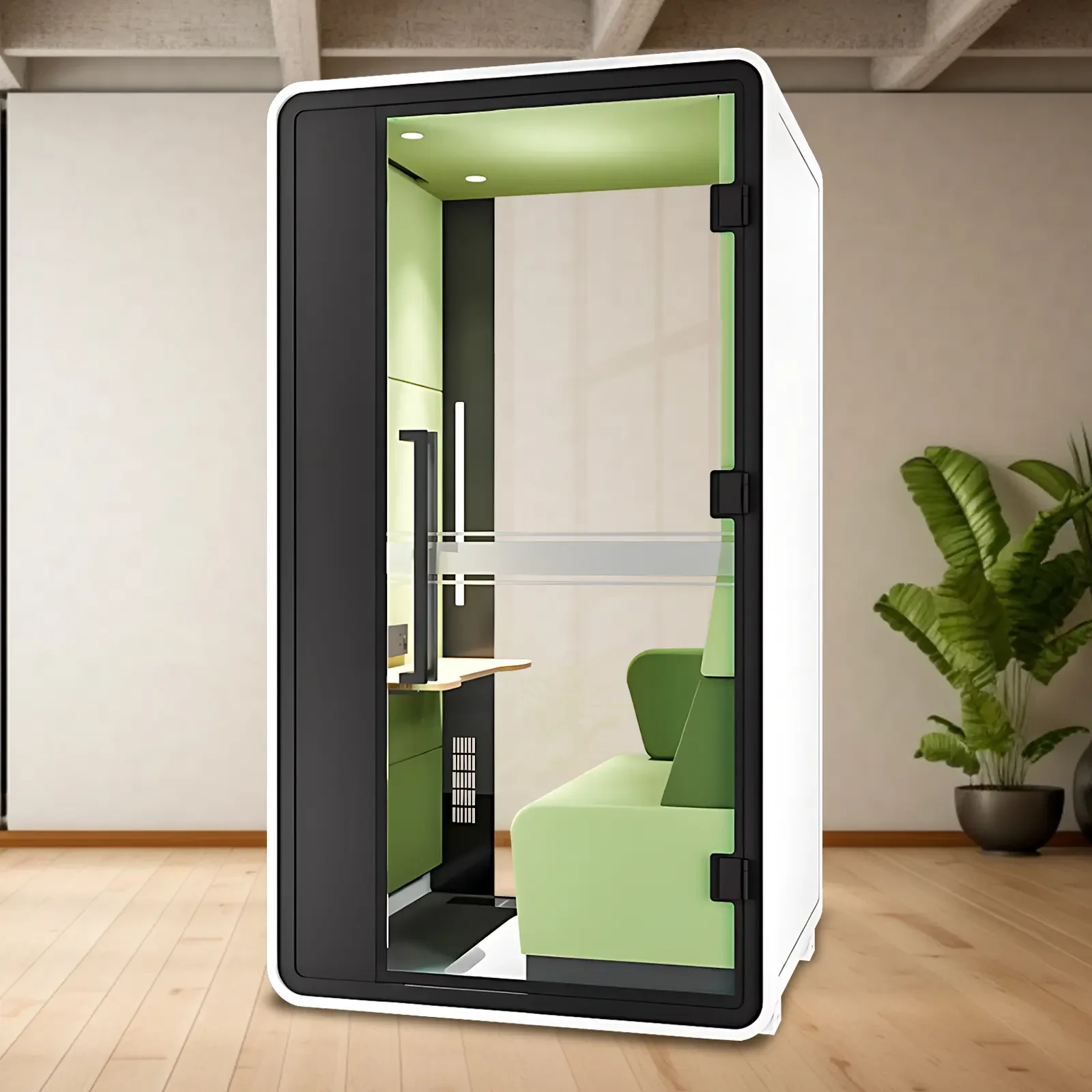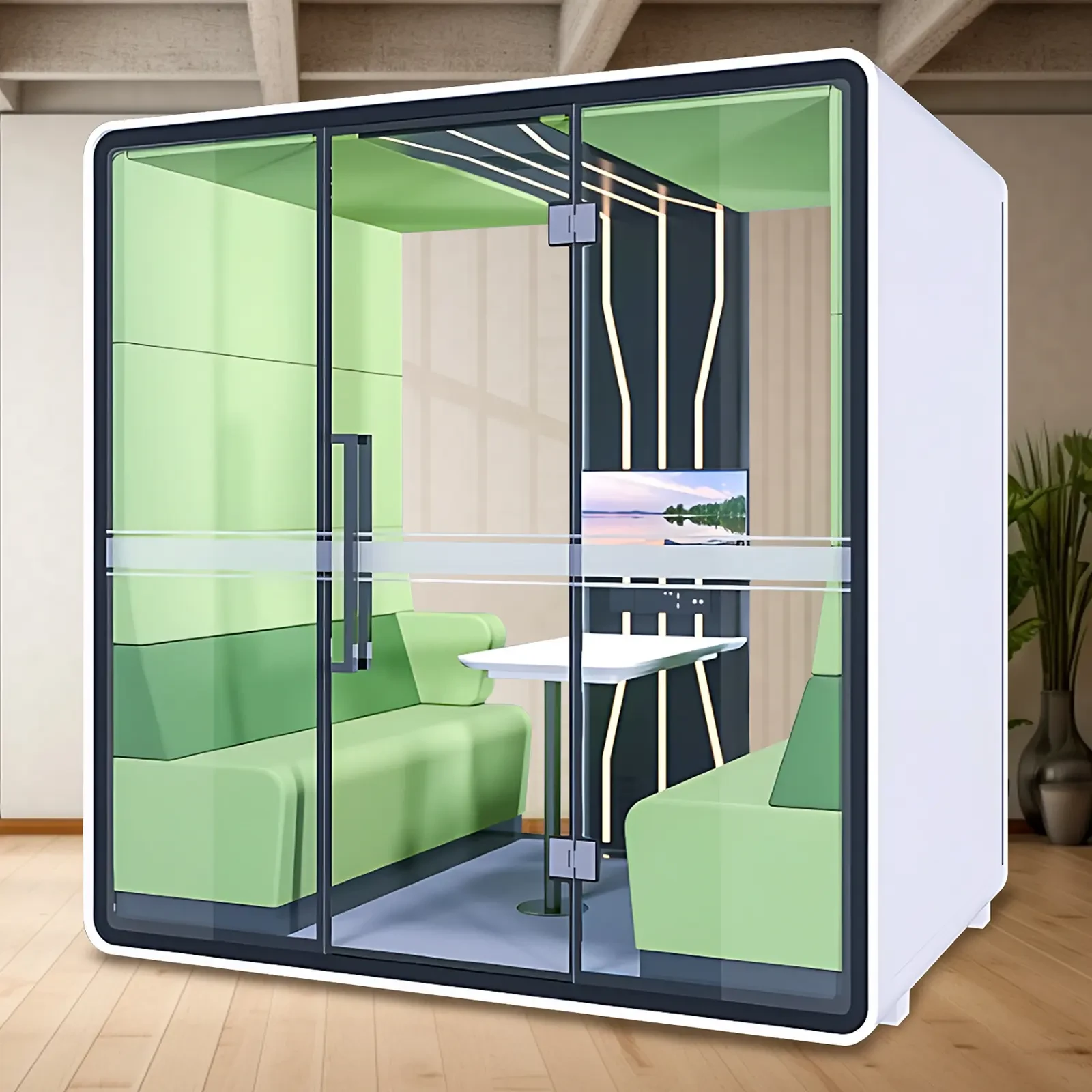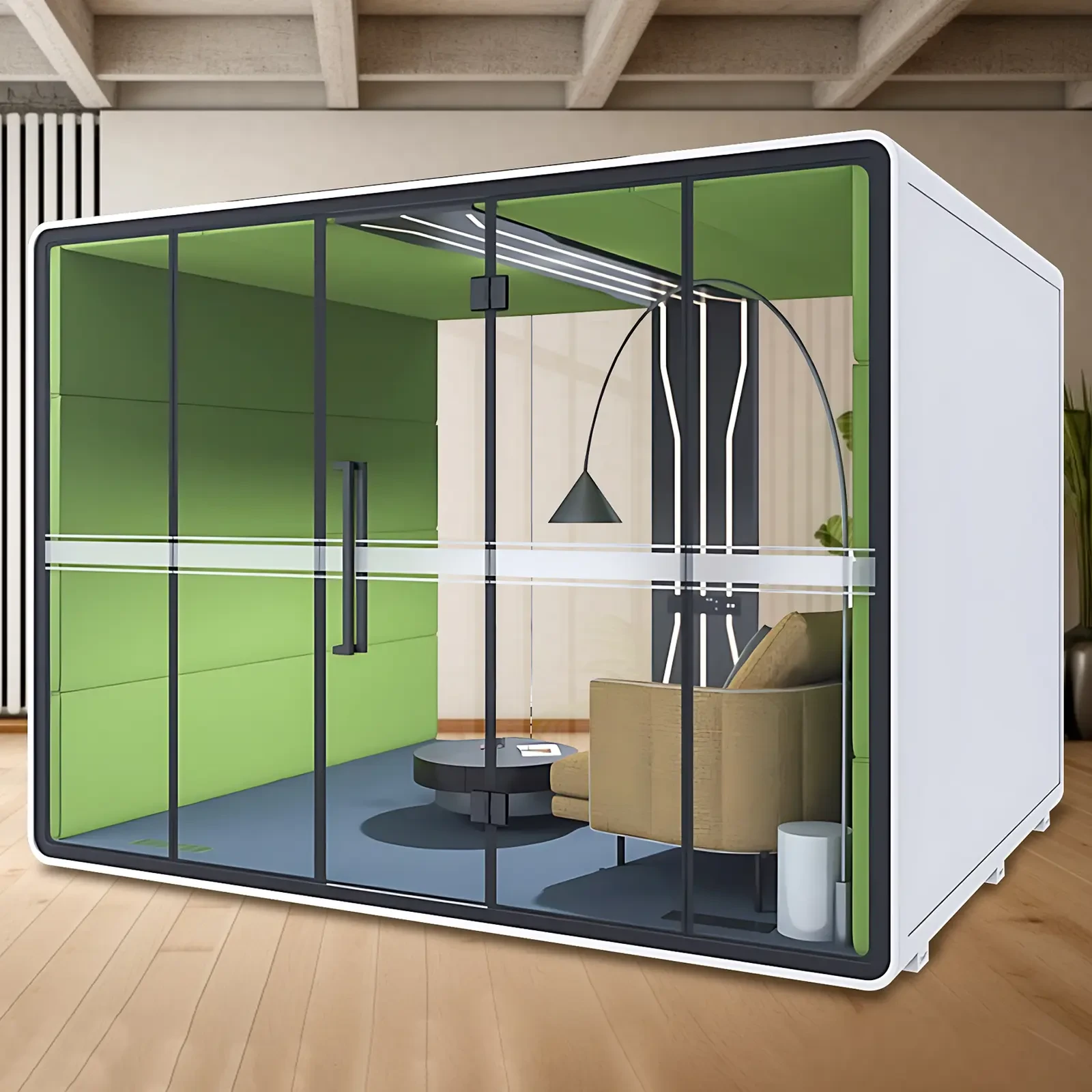The design of a music classroom, a quiet cabin requires a balance between sound insulation and a comfortable learning environment to ensure students have the best experience when practicing and learning music. Here are some ways to ensure a good learning environment:
Soundproofing: Use effective soundproofing materials, such as sound-absorbing panels and acoustic foam, to reduce the transmission of internal and external noise. Ensure the walls, ceiling, and floor of the quiet cabin are well-insulated.
Ventilation System: Provide an effective ventilation system to ensure air circulation within the cabin and avoid discomfort caused by excessive confinement. Ensure that noise generated by the ventilation system minimizes the impact on the learning environment.
Good Lighting: Provide adequate and soft lighting to ensure students can clearly see music and instruments during practice and learning. Use dimmable lighting systems to accommodate different learning needs.
Adjustable Furniture: Use furniture with adjustable height and angle to accommodate students of different ages and heights, ensuring their comfort while playing instruments or practicing music. Modular Design: The music classroom silent cabin is designed with a modular structure to allow for flexible layout and adjustment based on diverse teaching needs.
Removable Sound-Absorbing Panels: Removable sound-absorbing panels are used within the silent cabin to adjust the sound absorption according to students' specific practice needs, creating a more suitable music learning environment.
Learning Atmosphere Design: A positive learning atmosphere is fostered within the silent cabin by selecting appropriate colors, decorations, and artwork to stimulate students' interest and creativity.
Technical Support: The necessary audio and recording equipment is provided to support the technical needs of music instruction. This equipment is ensured to be user-friendly, and necessary training is provided.
Safety Design: Safety considerations are taken into account, ensuring that the silent cabin design meets relevant safety standards, especially for students who use musical instruments.
User Feedback: Regular feedback from students and teachers is collected to understand the actual use of the silent cabin, and adjustments and improvements are made based on this feedback.
By comprehensively considering factors such as sound insulation, comfort, ventilation, and lighting, the music classroom silent cabin provides a positive learning environment, helping students achieve better results in music learning.

 USD
USD
 GBP
GBP
 EUR
EUR



